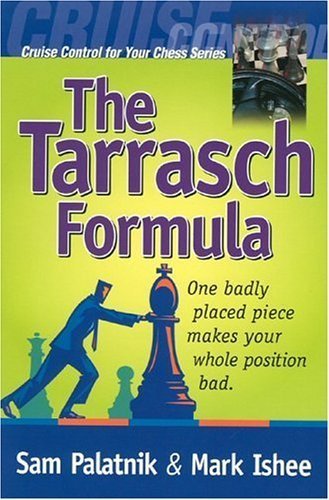The Tarrasch Formula’s central metaphor is an interesting one – the pack versus the herd. Imagine your own pieces as a pack of wolves trying to isolate a sick buffalo from your opponent’s herd. The premise is that steady play ‘to reduce the power of a single enemy piece, turning down the volume until its normal voice becomes a whisper,’ can be enough to win a game. The authors examine play against weak knights, bishops, and opposite-colored bishops in situations where a piece is cut off or misplaced. They have a chapter on heavier pieces and on zugzwang. Finally they revisit Philidor’s Defense from Palatnik’s unique perspective with the Palatnik Gambit, melding the Tarrasch Formula and Palatnik’s fresh approach to an old opening idea into a viable opening repertoire. The 57 games in this book will very likely transform the way you play chess, providing a straightforward and effective method for improving your decision-making and move selection.
- Examine play against weak knights & bishops
- Zugzwang combinatorial game theory
- Philidor’s Defense with the Palatnik Gambit
- 57 games to improve your decision-making and move selection.
Dr. Siegbert Tarrasch was the first to formulate and express the rule that “if one piece is badly placed, your whole game is bad”. The genius of the phrase lies in its simplicity as well as its correctness. Properly applied, it is a significant addition to Steinitz’s theory. On the basis of this single axiom, various types of positions can be studied where the difference in force between the two sides is defined only by the difference in location between corresponding pieces. Applying the Tarrasch Formula in this way develops and builds chess theory by emphasizing the interrelationship between the location of a pieces and its real power. Examine any modern textbook of chess strategy and you will see its lasting value. The Tarrasch Formula is a fundamental and unifying principle that embraces familiar core concepts such as “good/bad bishop”, “advantage of opposite-colored bishops in an attach”, “superiority of knight over bishop” (and vice versa), and so forth.



